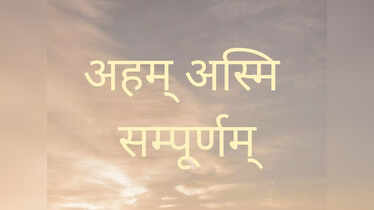Sanskrit, one of the most ancient languages of the world, is revered for its profound spiritual, philosophical, and literary richness. Among its many treasures are the shlokas—concise, poetic verses that encapsulate deep wisdom in just a few lines. These shlokas are not merely linguistic artifacts but guiding principles of life, offering insights into ethics, devotion, and the very nature of existence. Many of these verses, drawn from ancient texts like the Vedas, Upanishads, Bhagavad Gita, and various Smritis, have been passed down for generations, forming the backbone of Indian philosophical and cultural thought.
One of the most widely known Sanskrit shlokas is “Asato mā sadgamaya, tamaso mā jyotirgamaya, mrityor mā amritam gamaya.” This beautiful verse, found in the Brihadaranyaka Upanishad, translates to “Lead me from the unreal to the real, from darkness to light, from death to immortality.” It is a universal prayer for truth, knowledge, and liberation, reflecting the eternal human quest for higher understanding and spiritual evolution click this. Another profound shloka is from the Bhagavad Gita: “Karmanye vadhikaraste, Ma phaleshu kadachana.” This means “You have the right to perform your actions, but not to the fruits of those actions.” This teaching emphasizes the importance of selfless action and detachment, encouraging individuals to focus on their duties without being bound by expectations of success or failure.

Sanskrit shlokas also often express the unity and divinity of all existence. For instance, the famous verse “Vasudhaiva Kutumbakam” from the Maha Upanishad means “The world is one family.” This thought fosters compassion, tolerance, and global brotherhood, transcending divisions of nationality, religion, and race. Similarly, the shloka “Sarve Bhavantu Sukhinah, Sarve Santu Niramayah” is a heartfelt prayer for universal well-being: “May all be happy, may all be free from illness, may all see auspiciousness, and may none suffer.” These timeless prayers illustrate the expansive and inclusive worldview cultivated in Sanskrit literature.
In addition to philosophical teachings, Sanskrit shlokas are filled with devotion and praise of the divine. The verse “Guru Brahma, Guru Vishnu, Guru Devo Maheshwara, Guru Sakshat Param Brahma, Tasmai Shri Gurave Namah” is often recited to show reverence to one’s teacher or guru, recognizing them as the embodiment of the supreme divine force itself. Similarly, the famous “Shantakaram Bhujagashayanam Padmanabham Suresham” describes Lord Vishnu as the tranquil one who rests upon the cosmic serpent, symbolizing the calmness amidst the chaos of creation.
Each shloka carries not only poetic beauty but a resonance that touches both the intellect and the heart. They serve as practical tools for meditation, contemplation, and daily guidance, making Sanskrit more than just an ancient tongue—it becomes a living source of inspiration. Learning these shlokas with their meanings deepens one’s understanding of life’s purpose, instills peace, and connects individuals to a tradition of wisdom that continues to illuminate minds across ages.
